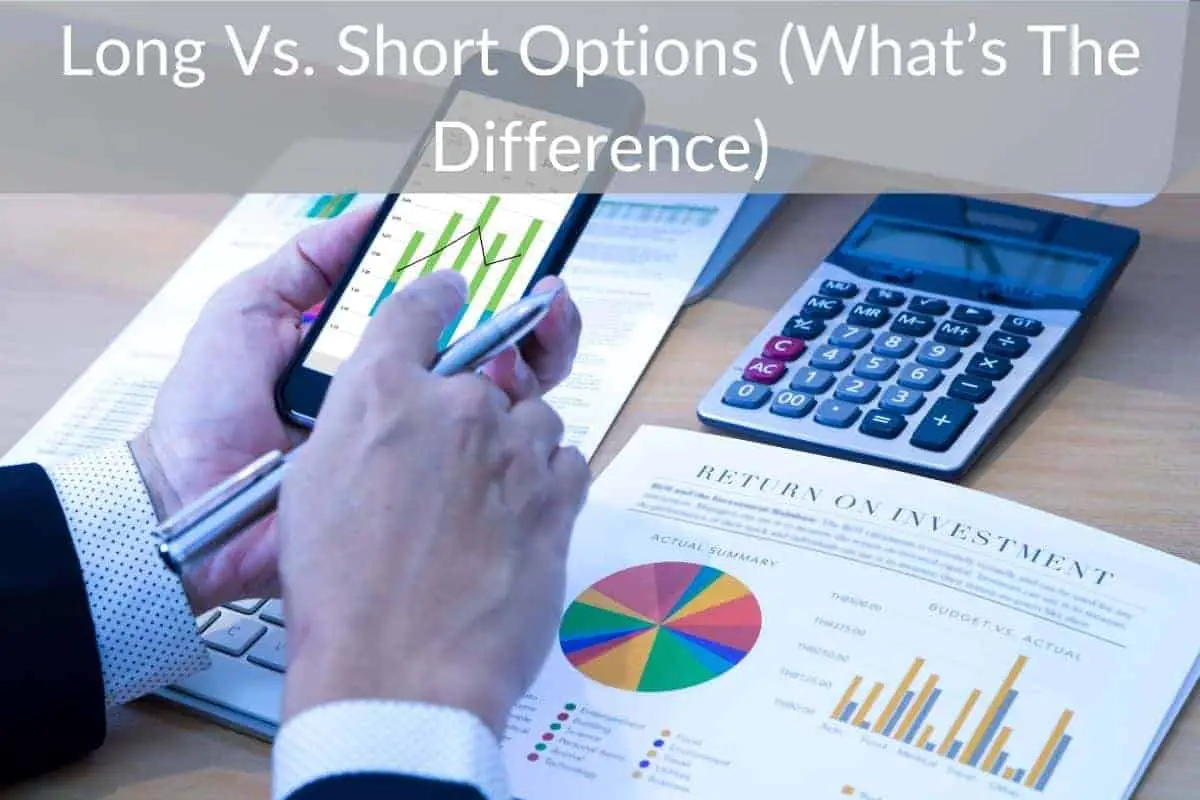Table of Contents
*This post may contain affiliate links. As an Amazon Associate we earn from qualifying purchases.
As is the case with other forms of trading, investors can be long or short in options trading. In stock trading, an investor going long means buying an asset, while going short means selling it.
In options, however, it’s a little more complicated.
Being “long” a short or a put means that you purchased the call/put in your account. Being “short” a call or put means that you sold the call/put.
With shares of a stock being long means you own the stock while being short means that you sold shares of a stock you don’t own. So basically being long on both stock shares and calls mean you bought them while being short means that you sold them.
In the rest of the article I will look at both sides in a little more detail to help you distinguish between them quickly.
Long and Short Options Explained
Long Options
Long options are divided into long calls and long puts. In long calls, the buyer expects the underlying asset to rise in value to the strike price and beyond before the contract expires.
The more the asset rises beyond the strike price, the higher the value of the option contract. The buyer will either exercise the contract before the expiration or sell their position for a profit.
With long puts, the investor purchases a put option and expects the underlying asset to fall in value. The terminology used here may be confusing if you’re coming from the world of CFDs trading or the stock market.
In those other forms of trading, any investor that expects an asset to drop in value will sell or short the asset. However, you have to keep in mind that it’s all about the contract in options trading. You’re not buying the asset. Instead, you’re buying the contract.
So, a put option contract becomes more valuable if the underlying asset falls, in line with the investor’s expectation.
Short Options
They’re also divided into short calls and short puts. The investor writes or sells a “short” call and expects an underlying asset to stay below the strike price until the options contract expires.
Their return on the position is dependent on the value of the call contract dropping. These investors serve as the counterparties to long calls.
With short puts positions, the investor writes or sells a put option with the expectation that the underlying asset will go or stay above the option’s strike price. Their profit relies on the put contract expiring worthless on the due date.
These investors serve as the counterparties to long puts.
Important Differences Between Long and Short Options
An investor holding any long options, as explained above, has the right to buy the underlying asset from the seller (the holder of the short option) if the strike price is reached or surpassed.
On the other hand, investors selling short options have an obligation to sell the underlying asset to the buyer at the specified strike price (in the case of the call) or buy the asset from the buyer at the specific strike price (in the case of a put).
For example, Joe (long options holder) buys an Apple (APPL) long call option from David (short options seller) with the strike price at $290. As a long option holder, Joe needs to pay a premium for the purchase to David.
Let’s say the premium costs $5 (times 100 so $500). If APPL trades above $295 on the market, Joe’s position is in the profit in regards to exercising the call. However, it might actually be above the $5 that he paid for it when the stock is at $292-293 depending on how much time is left before expiration.
David has already pocketed the $500 premium payment. However, he now has to sell APPL stocks to Joe at $290 if Joe decides to exercise the contract at any time before it expires. Joe is likely to exercise the option if the market price of APPL reaches above $290.
Joe also might sell the call option at any point and another investor will exercise it.
The point is that David (the call seller) is obligated to sell the shares of stock at the $290 price since they sold a call at that strike.
How Investors Use Long And Short Positions In Options Trading
In many cases, options traders don’t go with the simplistic example of long and short options trading, as explained in the example above. Many traders use long and short positions in different ways to achieve different results.
Some traders use both long and short options to leverage or produce income on an underlying asset.
For example, traders holding long call options positions have a bullish bias. They expect the stock price to rise, so they buy a long call with a strike price that should be achievable within the option’s lifespan.
Now, the traders can hedge their long call position by getting into a long put option position, which confers the right to sell a stock at a guaranteed price (the strike).
Some traders also use a similar strategy when short (selling or writing) call options. It’s a good way to go short on stocks without borrowing stocks, as is the case with normal stock short selling.
With this option, you can collect the option premium as income and rest safe knowing that you can sell your long stock position at a higher and guaranteed price.
Similarly, a short put position allows you to buy the stock back at a specified price, and you can collect the premium as you wait for the stock price to reach the strike price.
The strategies you can use to turn a profit with long and short options are numerous. It gets even more interesting (or confusing to some people) when you already own shares and use covered calls to generate income.
With more research into the different approaches, you can find out what works for you.
Can You Hold Long and Short Options Positions in One Account?
You can hold both long and short positions in one account. However, the nature of short positions means they’re riskier to hold, so limits are usually applied in IRAs or certain cash accounts.
Some brokers require you to have a margin account with them before you can hold short positions. You may also have to fill out some paperwork to show you understand the risk of the positions you intend to take.
If you’re unsure about your limits, talk to your broker to clear up any confusion.
Final Thoughts
Long and short mean slightly different things in options trading compared to the norm in other investment vehicles. Unlike in stock or CFDs, where short means a bearish bias and long means a bullish bias, a long or short option position holder may be bullish or bearish biased, depending on the options contract they choose to go with.
Taking your time to understand the differences will help you create options trading and general investing strategies that can improve your portfolio.

